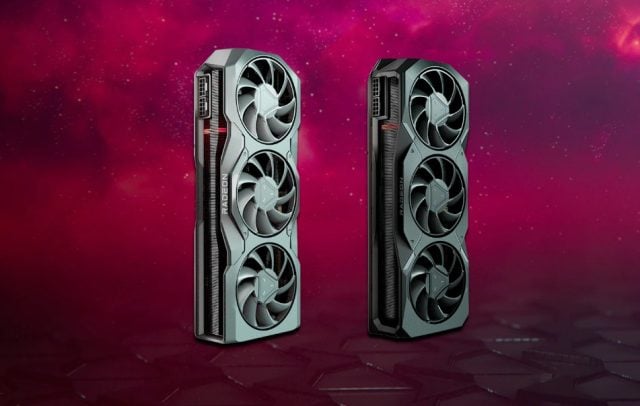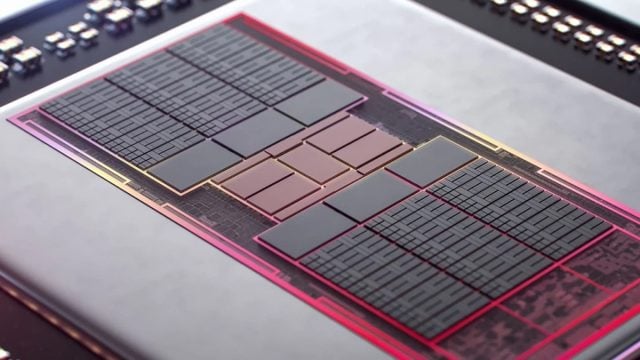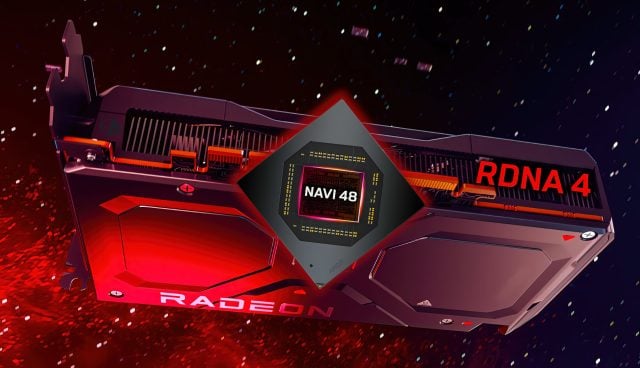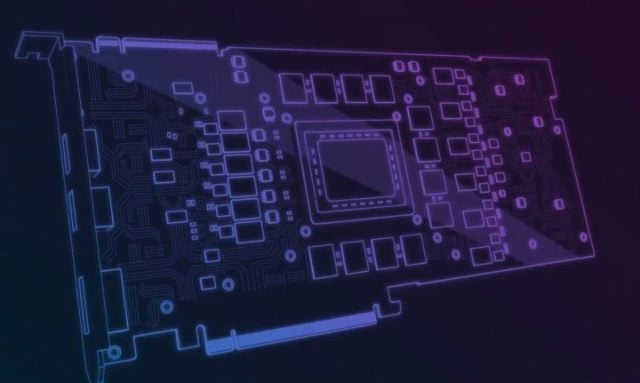AMD RDNA 4 Architecture: All Known About the RX 8000 Series

One thing is clear to everyone: AMD has always trailed NVIDIA in the GPU scene throughout history. However, the red team never gave up and always continued to improve. In addition to the big breakthrough in the CPU arena, we have seen significant breakthroughs on the graphics front, especially in the last two generations. Next is the RDNA 4 architecture. AMD is preparing for the race with its new architecture and the Radeon RX 8000 on the horizon.
According to our expectations, 2024 will host many innovations in the GPU world. We will be closely following the heated battle of three separate giants: NVIDIA, AMD and Intel. NVIDIA is currently putting the finishing touches on the RTX 5000 Blackwell series. Intel, on the other hand, is preparing a more powerful Battlemage architecture with the experience it has gained. So what will AMD do? Will the RDNA 4 architecture be enough to compete with rival NVIDIA? Today we will talk about the RX 8000 series, including some unearthed information, leaks and all the known ones.
RDNA: First Insights
As you might expect, AMD hasn’t shared any details about RDNA 4 yet. As usual, leaks shed light on some data. Some information from different sources overlaps with each other.
Continuing to leak uninterruptedly Moore’s Law Is Deadpredicts that AMD will release RDNA 4 in only two configurations: two GPUs, Navi 48 and Navi 44. If this prediction is correct, we can say that AMD will choose a completely different strategy in the upcoming RX 8000 series. Two main GPUs, low and high-end, will be adopted, and configurations in different segments will be derived from these GPUs. We understand this.
| Production technology | TSMC N4P |
| Architectural | RDNA 4 |
| GPU | Navi 48, Navi 44, Navi 43 (?) |
| Memory Type | GDDR6 |
| Maximum Bandwidth | 256-bit |
| Maximum Clock Speeds | 3GHz-3.3GHz |
| Release date | 2024 last quarter |
So, will the red team be able to create a rival for the other side’s flagship? They haven’t been able to do this for years, and it looks like the same scenario will happen in the new generation. Most people agree on this: AMD will not, or will not be able to, launch powerful models that can compete with premium class graphics cards such as the RTX 5090. They may not even offer a rival to the RTX 4080. The company will apparently target the middle class, at least initially.
According to sources, the chip named “Navi 48” will be AMD’s flagship in the new generation. Navi 48 will be used in the RX 8800 XT, according to expectations. Early estimates suggest that this GPU will have a 256-bit interface with GDDR6 memory at 18-20 Gbps. It is also possible that it comes with a 192-bit bus, as stated in some leaks. The Navi 44 GPU is said to come with a 128-bit memory bus and a significantly smaller GPU.

MLID mentioned a possible Navi 43 GPU a while ago, which is no longer mentioned. Rumor has it that the Navi 43 had 64 processing units (CUs) while the Navi 44 had 32 CUs. However, although there is no certainty in the information, even the source warned that these features are uncertain.
To summarize, changes are expected in the mid-range and entry-level segments with the release of Navi 48 and Navi 44 GPUs based on the RDNA 4 architecture. These GPUs will power cards like the Radeon RX 8800, 8700, 8600 and 8500 series on the desktop or mobile platform.
Expectations from RDNA 4 Architecture
Navi 44 and Navi 48 GPUs are likely to be built on the TSMC N4P process. In other words, it is a technique close to the production technology used in the RTX 4000 series. While the estimated die size of the Navi 48 is 300-350 mm², the Navi 44 is much smaller at under 210 mm². In other words, it is very close to the GPU inside the RTX 4060 Ti.
Usually, AMD’s flagship chip was purchased with names such as Navi 31, Navi 21. As we just mentioned, there may be a lot of change in the new generation. This time we see Navi 44 as the lower-end GPU and Navi 48 as the top-end graphics chip.
At first, it was mentioned that some RDNA 4 GPUs would reach frequencies as high as 3.5 GHz. However, these estimates were later revised. Overclocked models produced by partners such as MSI and ASUS are expected to reach 3-3.3 GHz levels. Regardless, these levels are enormous. For example, RX 7900 XTX has a gaming frequency of 2.3 GHz.

If you remember, the company switched to chiplet design containing different units within the chip with the RDNA 3 architecture. However, we should point out that this is different from MCM. Some rumors initially suggested that AMD might switch to MCM in RDNA 3, but this did not happen. Initial reports on RDNA 4 said the same thing, but over the past few months leakers have slowly backed away from this theory. Now, multiple sources say that AMD will continue with a single GPU. In other words, there will not be two separate GPUs on the PCB, we will see a single monolithic chip. Thus, expectations regarding MCM were left to the RDNA 5 architecture. If the high-end RX 8000 models had not been canceled as rumored, perhaps MCM-based graphics cards could be on the market soon.
Why Not GDDR7?
NVIDIA will most likely use faster and newer GDDR7 memory with the RTX 5000 series. If the RTX 5000 series comes with 28 Gbps GDDR7 memory, a great advantage will be established. Red players, on the other hand, will stick to GDDR6 with memory running at 18 Gbps. So why is AMD missing the train, why is it staying on GDDR6?
Navi 33 models, as well as some desktop GPUs such as the RX 7900 GRE or RX 7700 XT, were already powered by 18 Gbps memory. In the mobile form factor, this speed represents the maximum speed used by AMD.
In fact, it was rumored that both companies would switch to GDDR7. Moore’s Law Is Dead speculates that Navi 41 (or Navi 4C and Navi 4X) and Navi 42 GPUs are planned with GDDR7, which were later rumored to be cancelled. If the rumored Navi 41 was released, it would be the successor of the RX 7900 XTX. So we could expect a naming like RX 8900 XTX.
If the high-end cards were actually canceled, that would be a shame. However, there is a possibility that AMD will diversify its series with new models in the future, even if not at first. However, mid- and entry-level cards are all expected to feature GDDR6 memory.

The GDDR7 standard will again double the speeds offered by GDDR6, offering speeds of up to 36 Gb/s. With these data rates, approximately 1,728 TB/sec bandwidth will be obtained on the graphics card with a 384-bit data bus. RTX 4090, the most powerful available, can theoretically offer 1 TB/sec bandwidth.
With GDDR7, the 50 Gb/sec limit is expected to be exceeded in the coming years. MyDriversHe wrote that the GeForce RTX 5000 series and Radeon RX 8000 series graphics cards, which are expected to be released in late 2024, will use GDDR7 memory with 36 Gbps initial speeds. However, plans may have changed later. A GPU with a 256-bit GDDR7 interface can reach 1.15 TB/s bandwidth with the mentioned speeds. A 384-bit GPU can exceed 1.7 TB/s.
Infinity Cache
Let us remind you again that AMD uses very fast special memories called Infinity Cache in its graphics cards. We do not know what the company will do about Infinity Cache with RDNA 4. Perhaps even if speeds remain constant with GDDR6, progress can be made in memory bandwidth with Infinity Cache improvements.
Performance
It looks like AMD will at least disappoint users who expect high performance. The company’s most powerful RX 8000 model may even be weaker than the current RX 7900 XTX (Navi 31). Even if the RX 7900 XTX is better in terms of pure rendering performance, the new GPUs are expected to be superior in ray tracing and have better prices.
The flagship RDNA 4 card may indeed be a different story. Most sources say that the RX 8800 XT will be close to the RX 7900 XT in performance. MLID predicted that it would be approximately 10% slower than the RX 7900 XTX and offer performance close to the RTX 4080. This means that it can be positioned somewhere between RTX 4070 Ti and RTX 4080.
On the positive side, the RX 8800 XT can be a good alternative to the RTX 4080 series with its affordable price. Everything is just a rumor, but when we look at the situation in general, these scenarios are likely to come true. Performance aside, AMD’s strategy regarding price/performance may surprise everyone.
Meanwhile, it is said that the RX 8700 XT, which will come with Navi 44 GPU, will offer similar performance to the current generation RX 7700 XT. What did we understand from this? AMD may set a lower price point. There is currently no news about models such as RX 8600 and RX 8500. It looks like there are no plans for low budgeters this year. However, new models will arrive at some point in 2025.
Ray Tracing
Let’s open a separate parenthesis for ray tracing. NVIDIA’s unconditional leadership continues. AMD can break this perception a bit by focusing on ray tracing performance with its RDNA 4 architecture. RedGamingTech said that a performance increase of 10% to 30% would be achieved. Sources from Moore’s Law Is Dead stated that AMD will not be able to outperform its rival in ray tracing. We did not expect this anyway, but we expect significant performance increases in ray tracing performance per processing unit.
It is said that the Navi 31 GPU used in the RX 7900 series will outperform Navi 48 in pure rasterization performance, but may lag behind in ray tracing.
RX 8000 Series Possible Release Date
If things go well on AMD’s side, RX 8000 graphics cards with RDNA 4 architecture will start to hit the shelves before the end of 2024. As you know, companies’ plans may change over time, but the time frame is more or less certain. Most leakers point to the cards being released in the second half of 2024. If we narrow down the time frame a little more, everything will probably happen in the last quarter.
Another source stated that the driver development process is progressing successfully and that things are progressing better than RDNA 2, which will be released in 2022. According to this leak, AMD may introduce the RX 8000 series during Computex in June, and sales may start in the third quarter.
Expected Pricing
GPUs such as Navi 48 and Navi 44 will be used in the RDNA 4 family. They’re probably opting for cheaper GDDR6 memory because they can’t compete with cards like the GeForce RTX 5080 or RTX 5090. Thus, AMD’s graphics cards can come at much more affordable prices. It might even lead them to add more VRAM capacity for AI workloads.
Even though AMD cannot outperform its rival in terms of performance, it seems to adopt an aggressive pricing strategy. According to rumors, the graphics card with Navi 44 GPU will be sold for under $ 400, while the higher-end Navi 48 GPU card (could be RX 8800 XT) will be sold for around $ 500. The RX 8800 XT could sell like hotcakes if it comes with significant performance gains and an affordable price.
AMD Radeon RX Series
| Radeon RX 5000 | Radeon RX 6000 | Radeon RX 7000 | Radeon RX 8000 | |
|---|---|---|---|---|
| GPU Architecture | RDNA 1 | RDNA 2 | RDNA 3 / RDNA 2 | RDNA 4 |
| Production technology | 7nm | 7nm | 5nm/6nm | 4nm? |
| GPU Family | Navi 1X | Navi 2X | Navi 3X | Navi 4X |
| Flagship GPU | – | Navi 21 (5120 SP) | Navi 31 (6144 SP) | Navi 41 (May be cancelled) |
| Premium GPU | Navi 10 (2560 SP) | Navi 22 (2560 SP) | Navi 32 (4096 SP) | Navi 48? |
| Mid-Range GPU | Navi 12 (2560 SP) | Navi 23 (2048 SP) | Navi 33 (2048 SP) | ? |
| Entry Level GPU | Navi 14 (1536 SP) | Navi 24 (1024 SP) | Navi 34 (1024 SP)? | Navi 44? |

